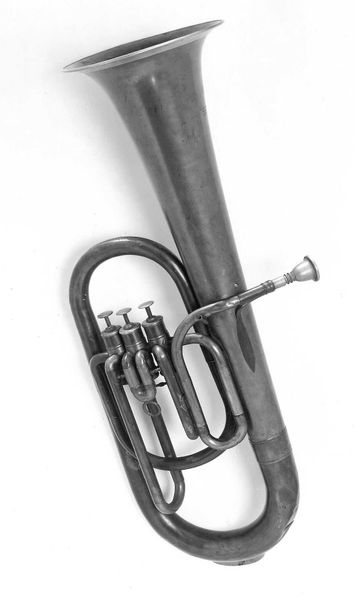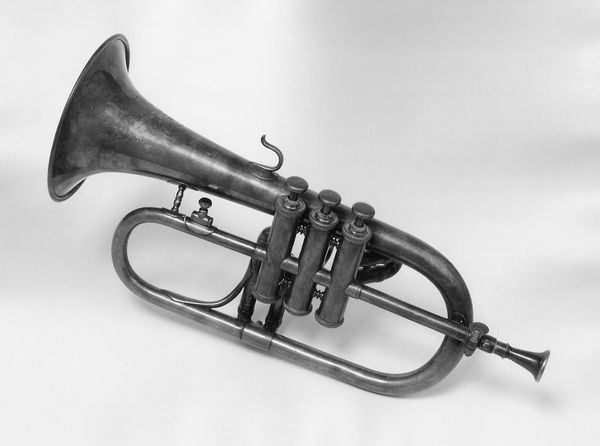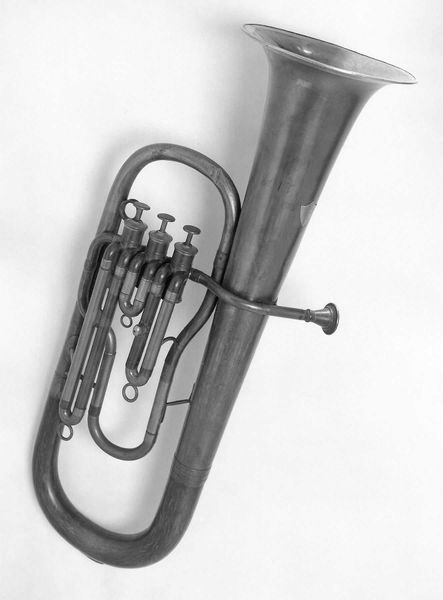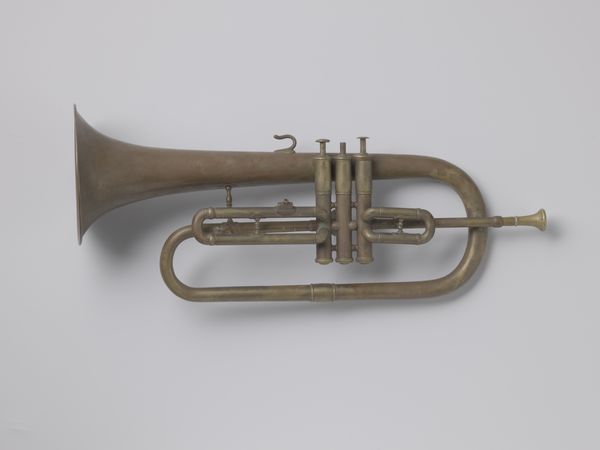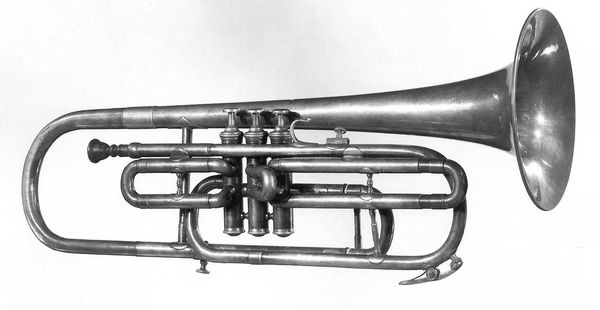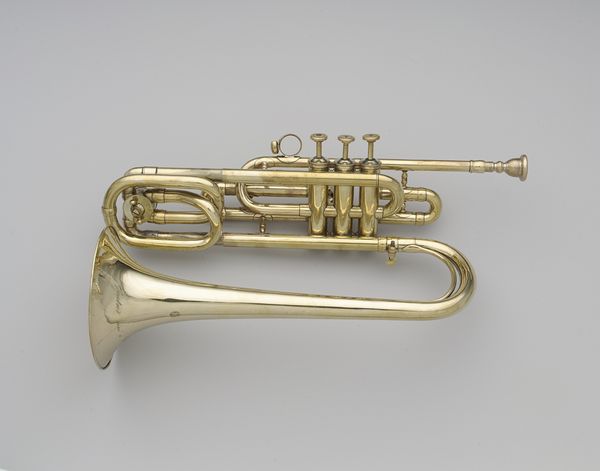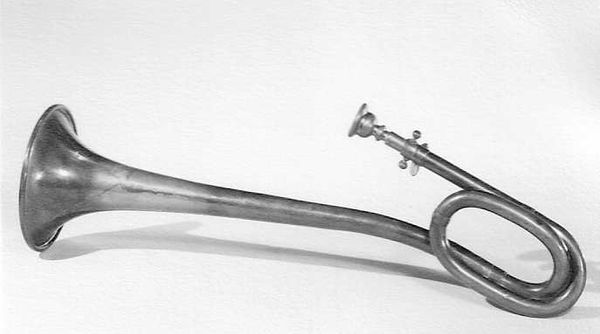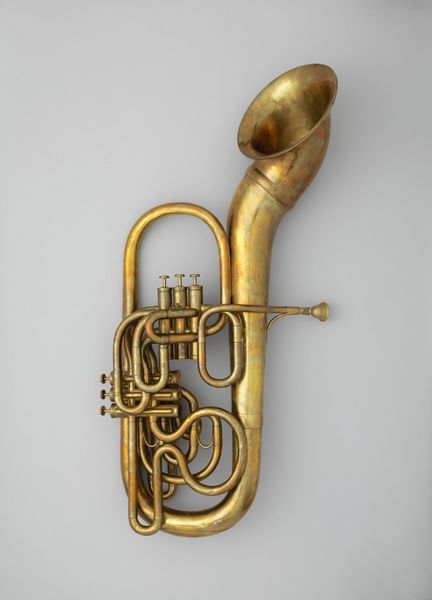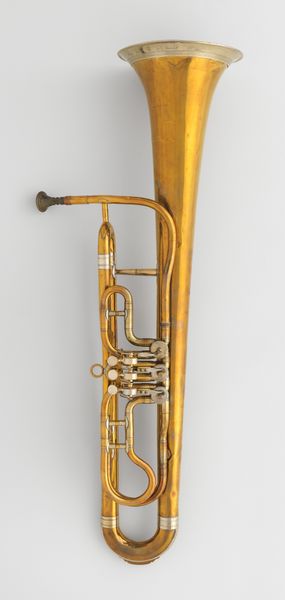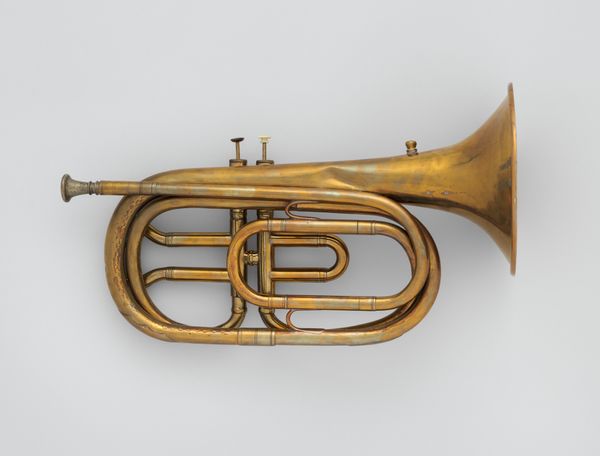
metal, photography
#
metal
#
photography
#
black and white theme
#
geometric
#
black and white
#
musical-instrument
Dimensions: Length: 105cm (41 5/16in.) Diameter of bell: 13.6cm (5 3/8in.)
Copyright: Public Domain
Editor: Here we have an image of a Tenor Valve Trombone in B-flat, crafted between 1840 and 1880 by Wenzelslaus Schamal. It looks to be predominantly metal. I’m really struck by the intricate network of its construction. What can you tell me about it? Curator: Considering its age and probable manufacturing origin, we can really appreciate the amount of skilled labor that went into shaping and assembling the various metal components. The choice of metal itself – was it brass, bronze, or another alloy? – speaks to the intended sound and durability. What was the workshop like where this trombone was created? Who were the laborers? What were their working conditions? Editor: That makes me think about the social context. What kind of music would this have been used for? And how accessible would a valve trombone have been to different classes of people? Curator: Exactly. The burgeoning middle class in the 19th century created a demand for instruments like this. Was it intended for military bands, amateur musicians, or concert halls? The level of craftsmanship might provide clues. We might think, too, about trade routes; where did the raw materials originate, and how did global economics affect its production? What effect did the advent of this mechanism of brass instrument have on its consumers? Editor: It’s fascinating to consider all the layers of production behind what seems like just a musical instrument. The relationship between the physical object and the human effort is very important, and this puts things in a new perspective. Curator: Absolutely, and by tracing its materiality, we can gain insights into not only its function, but the wider social and economic landscape in which it was conceived, made, and consumed.
Comments
No comments
Be the first to comment and join the conversation on the ultimate creative platform.

